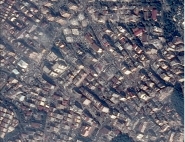Risks
We are confronted with a large number of risks. The term "Major risks" covers the following:
- natural risks: avalanches, forest fires, flooding, ground movements (and landslides), cyclones, storms, earthquakes and volcanic eruptions;
- technological risks: these are of man-made origin and include industrial, nuclear and biological risks, dam failures, etc.
- collective transport risks (persons, dangerous materials) are technological risks. They are dealt with separately, however, as the issues at stake vary according to the place where the accident occurs.
Two criteria characterise the major risk:
- infrequent occurrence: the less frequent the disaster, the more man or society may have a tendency to ignore the risk,
- extremely serious: large number of victims, extensive damage to property and the environment.
A potentially dangerous event, a hazard, is only a major risk if it applies to an area where human, economic or environmental issues are at stake. A disaster is triggered by the hazard; it is the materialisation of a risk that was not prevented. The damage is effective.
As a general rule, major risks are characterised by a large number of victims, a high cost in terms of material damage and the impact on the environment: vulnerability is a measure of these consequences.
Society needs to take these risks into account at all stages and at all levels of organisation. The information supplied by the Pleiades mission will mainly be useful for the prevention and post-crisis management of natural risks, although it is also of interest for technological and collective transport risks, given the mapping information it includes.
